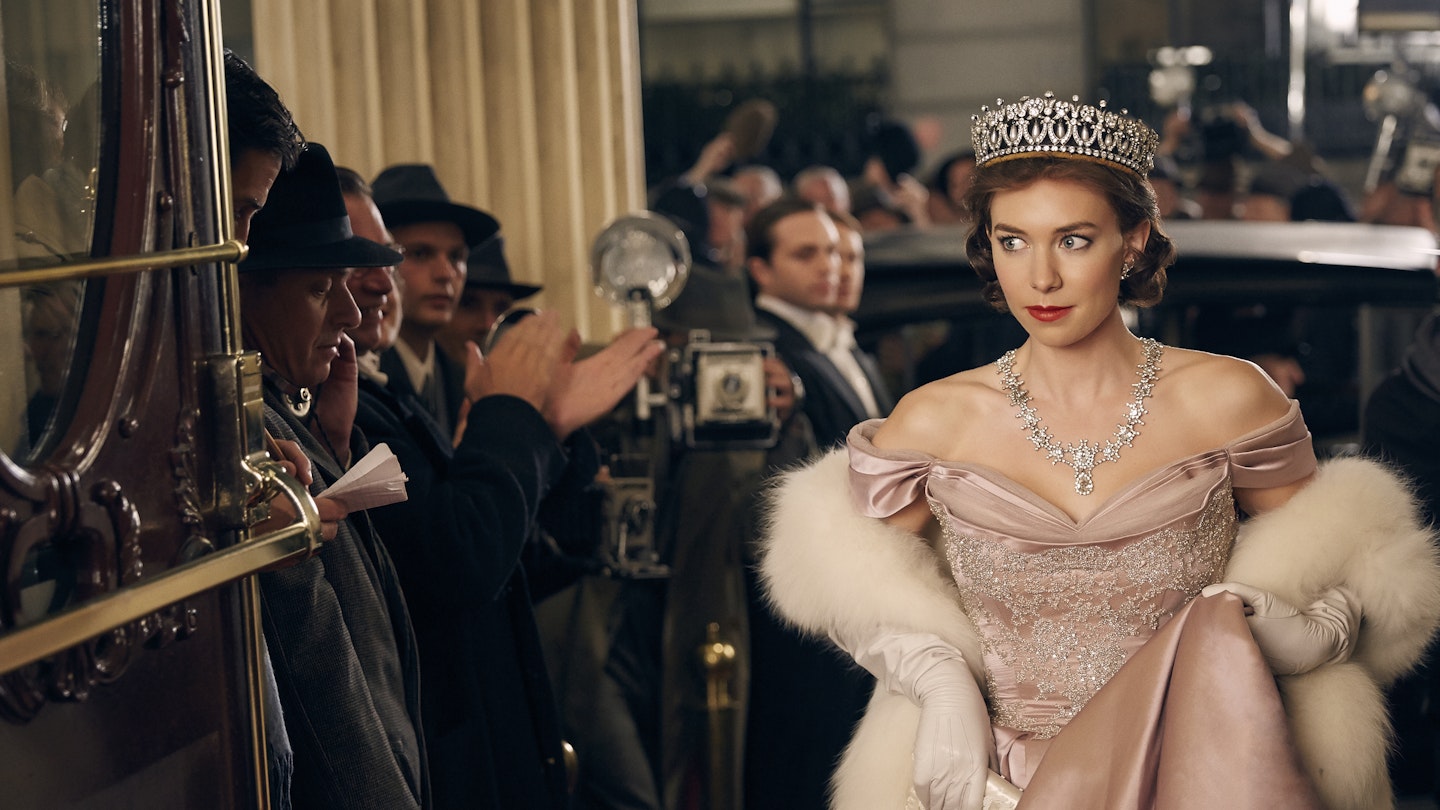There are costume dramas, and then there are costume dramas: with its lavishly outfitted re-imaginings of life behind palace doors – and its rumoured £100 million budget – Netflix’s The Crown certainly falls into the latter camp (without ever feeling like it values style over substance, either…) The woman responsible for the show’s painstakingly recreated royal costumes is Michele Clapton, the three-time Emmy-winning designer best known for dressing the very different – but equally formidable – queens of Game of Thrones. Currently working on the final season of Thrones while also creating costumes for Mamma Mia’s 70s-set sequel (‘For the next four weeks, I’ll think it’s the silliest idea I’ve ever had, but after that it will all fall into place again,’ she tells us of this unorthodox mix of projects), we caught up with the designer to learn the secrets behind the jaw-dropping wardrobes of Elizabeth, Margaret and co…
When it came to researching the royals, where did you start?
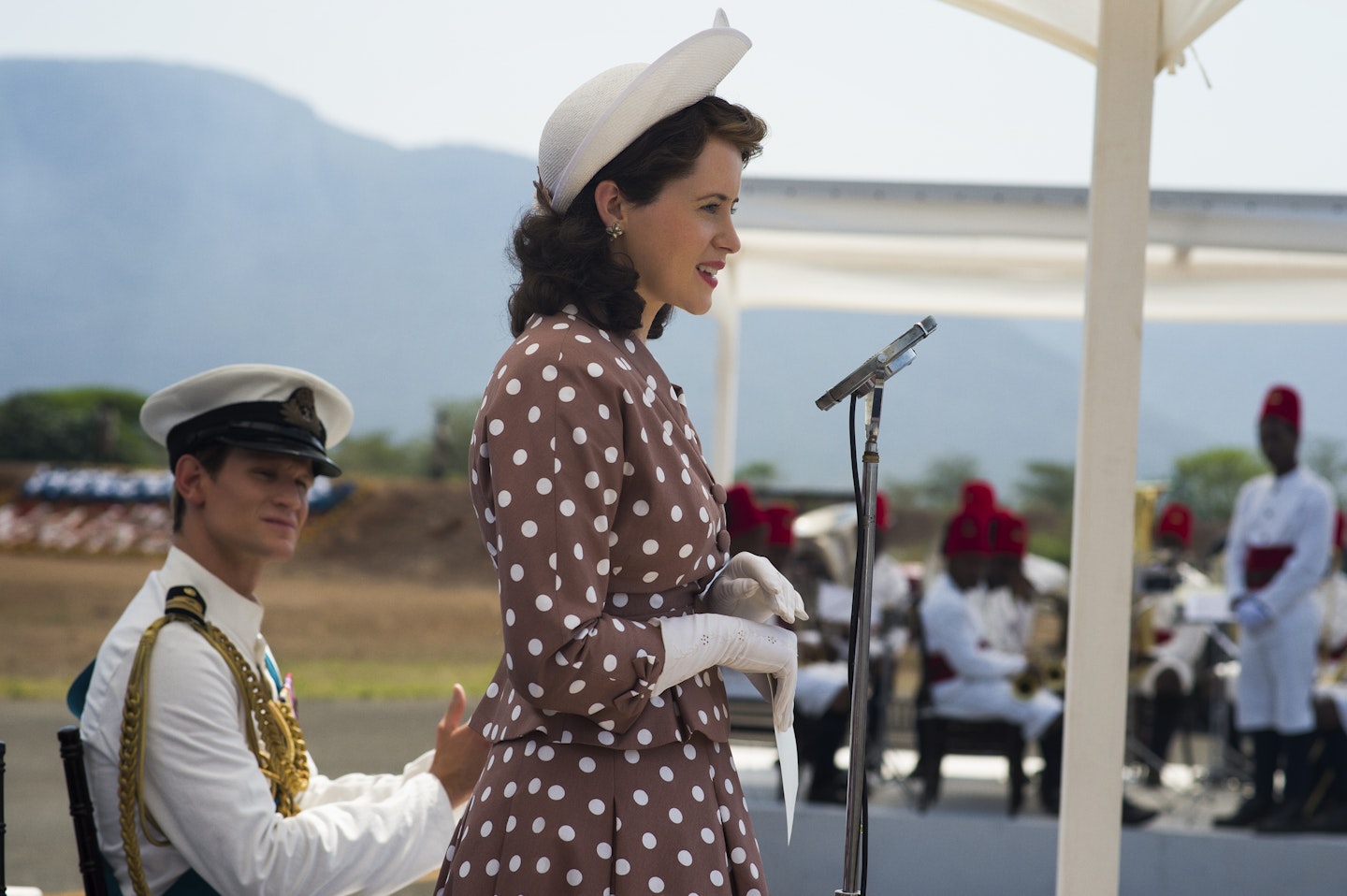
I sat down with [executive producers] Philip Martin and Stephen Daldry and [production designer] Martin Childs about six or seven months before the job, looking at photos and trying to get the essence of the show. There’s so, so much information on this subject, so what we had to do was take a style and then build it from there. After that, I just read a lot – I was on another job so I tried to dip in, read things and look at footage. We’d do our own individual research and then go back to the brilliant Crown researchers to check things out.
Did that vast amount of archive footage make things easier or more difficult for you?
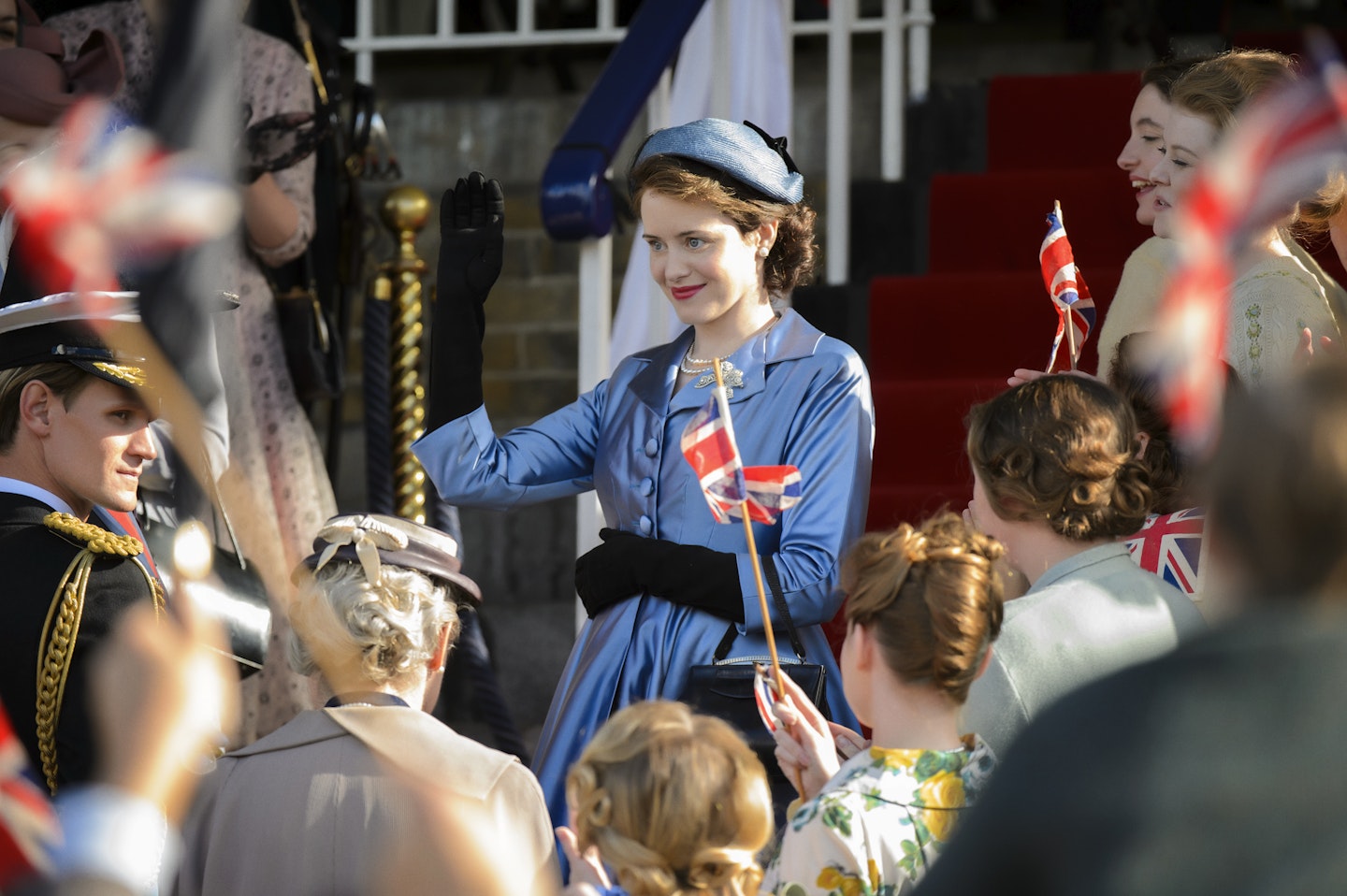
In some ways it helps, as everything’s already there – you can see it – but it’s all about the interpretation. You can look at 10 photos of Elizabeth’s wedding and every single one is different because there’s different lightening, or they’ve put a different tone on it. We went to Bath to look at Queen Mary [Elizabeth’s grandmother]’s actual dress, then looked at the seam inside to see what colour it really was before the sunlight damaged it – things like that are so fascinating to do. At one stage [the producers] thought we should match costumes to archive footage, but in fact we rarely did. We created most ourselves, but there were some elements that obviously, we had to get right: the coronation crown, the tour outfits.
Elizabeth appears almost as two women in The Crown: the public figure and the private wife and mother. How did you use her clothes to emphasise that divide?
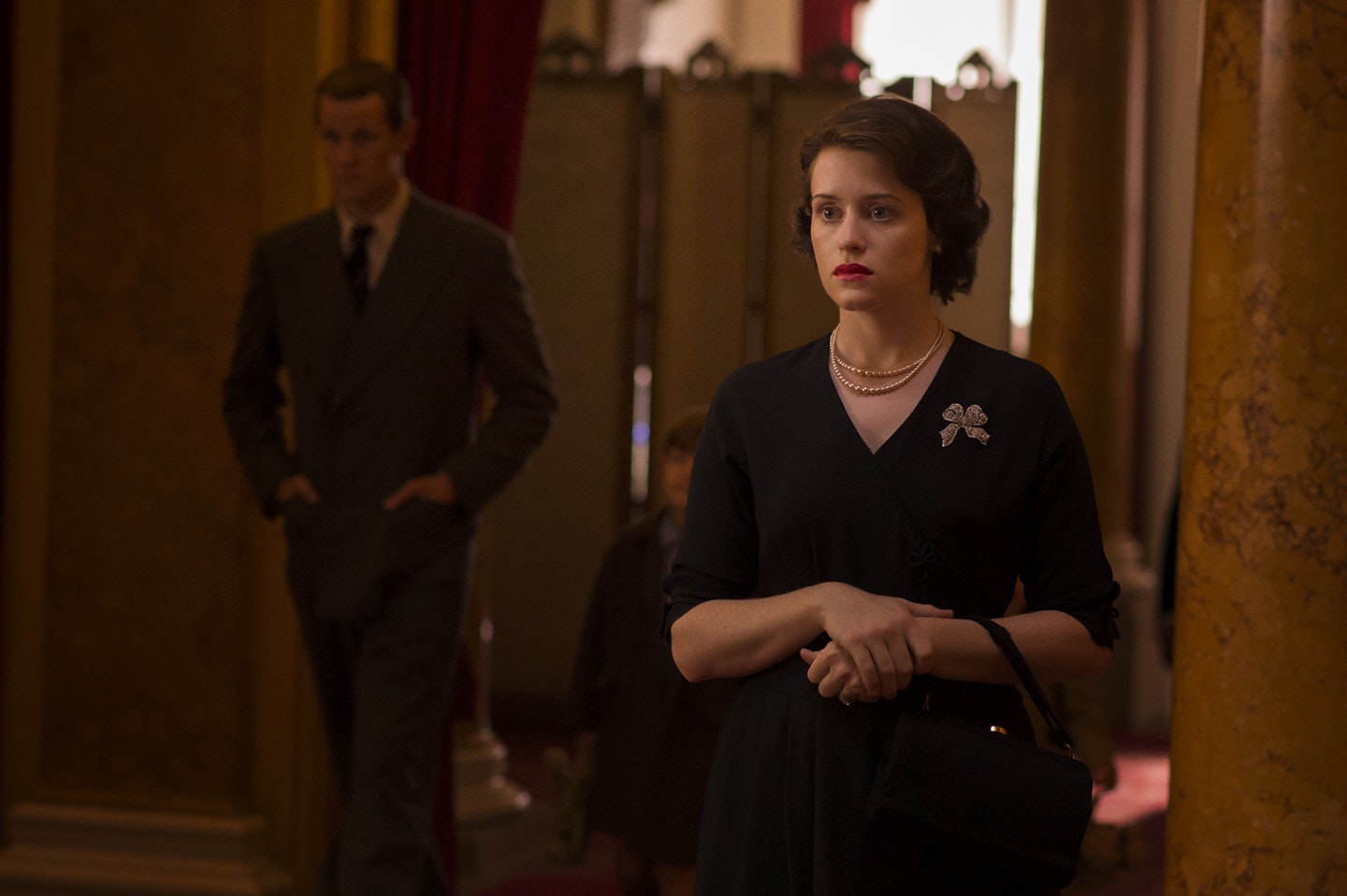
I wanted the clothes to tell the other private story, the side that the public at the time didn’t see – not the organised ‘private’ photo sessions at Balmoral, but trying to get the essence of how they might be even more privately than that. When you read about Elizabeth as a person, you soon learn she’s very practical. Her love of the countryside, her love of horses – that practicality comes through more than anything else. I tried to think about the way that she’s surrounded by men [when she becomes Queen]. Suddenly, she’s the focal point and I thought that her dresses would be a form of armour. From what I’ve read, she does appreciate pretty things, but I loved the idea of clearing that away completely: instead, she’s wearing solid blocks of strong colour. In a way, it’s emulating the idea of men’s suits that disguise the body.
She’s 21 at the start of the series; when it finishes, she’s 30. Do her clothes track that development?

The Queen Mother tended towards clothes that were quite frilly, pretty and sweet – there’s a lot going on in her frocks! The first thing that Elizabeth wears in The Crown is this pink dress, almost a direct copy of one of her dresses, which I felt was very influenced by her mother. She and Margaret used to wear very similar clothes, too. So it was a case of removing her from her mother’s influence, stripping that away while she’s finding her place. When she’s in Malta, and Treetops [on safari], I wanted a freeness to her costumes. They weren’t for show, they were just for her life with Philip. Then when they’re touring Africa, her outfits still look like she’s put them together. Pretty much after the coronation, she’s in these block colours, wearing much more official costumes to be seen in. There’s a steeliness, a toughness to Elizabeth as well: I had this idea that she hid behind those armour-like outfits and listened and learned, then slowly, as you realise she’s more comfortable in her new role, I tried to introduce a prettiness that creeps back in – that’s her personality coming back in.
How would you characterise the difference between Elizabeth and Margaret’s styles?
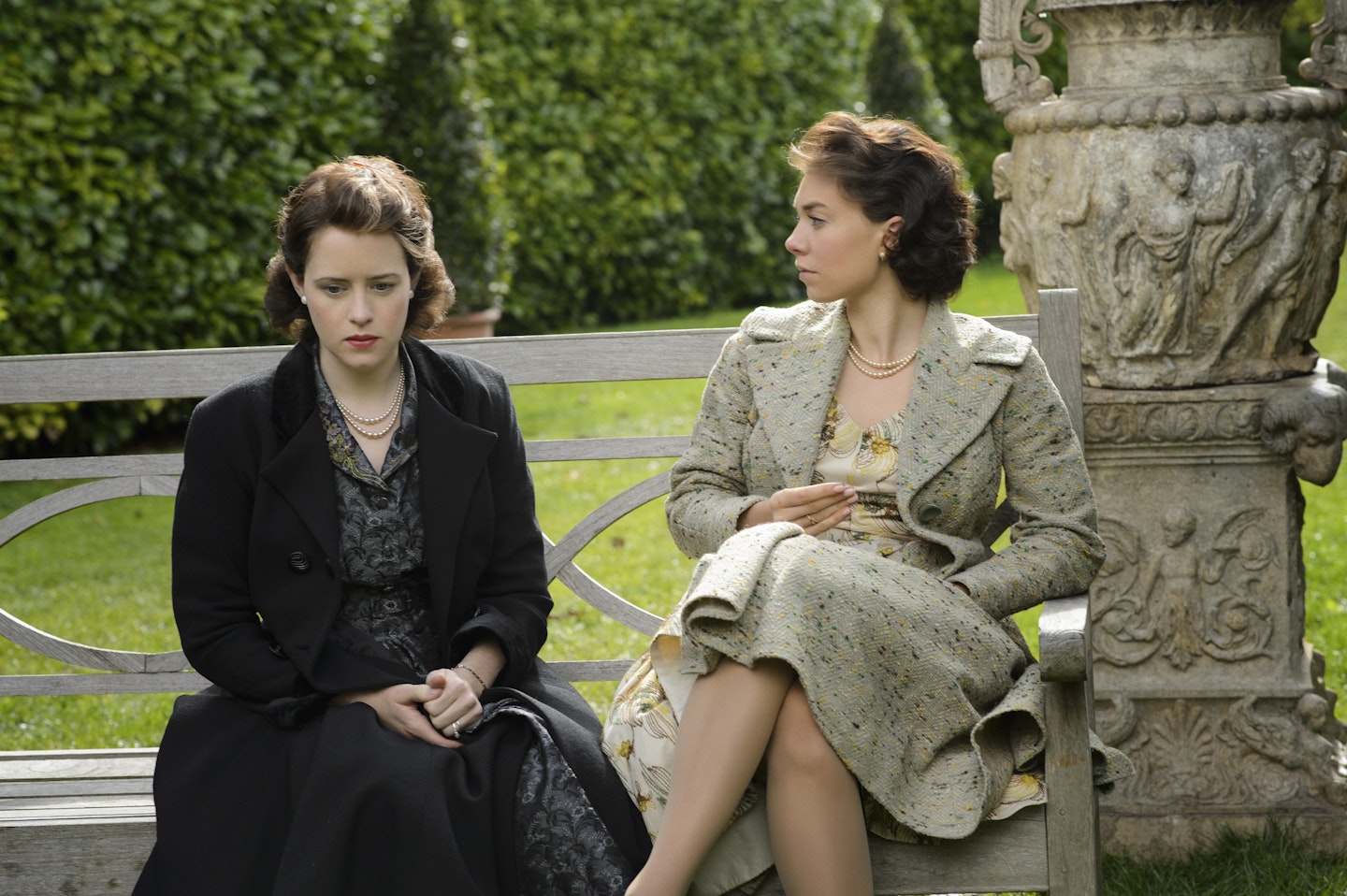
I was quite intrigued by something that I read, which said that Elizabeth would be in and out of costumes in moments: she’d be in jodhpurs playing with the kids or the dogs, then minutes later she’d be in the dress ready to go out. To my mind, she saw each of her looks as a uniform. I wanted her to look like she’d had one or two fittings. But Margaret, she’d have had three fittings and then said “Let’s go tighter here!” Elizabeth would put on a dress and look wonderful, but there wasn’t that joy there that Margaret inhabited clothes with. It was lovely to see the two different personalities of Claire [Foy] and Vanessa [Kirby] too, because Vanessa did love the clothes, she did run around with them and play with them, while Claire was much quieter about them – perfect casting. Even with Elizabeth’s big dresses, I wanted to make them look like they didn’t quite belong to her, until a moment towards the end when Cecil Beaton is taking a shot and suddenly everything fits beautifully – at that moment I wanted the clothes to say, “I’ve grown up and grown into myself.”
Margaret clearly loved fashion. She must have been so much fun to design for?
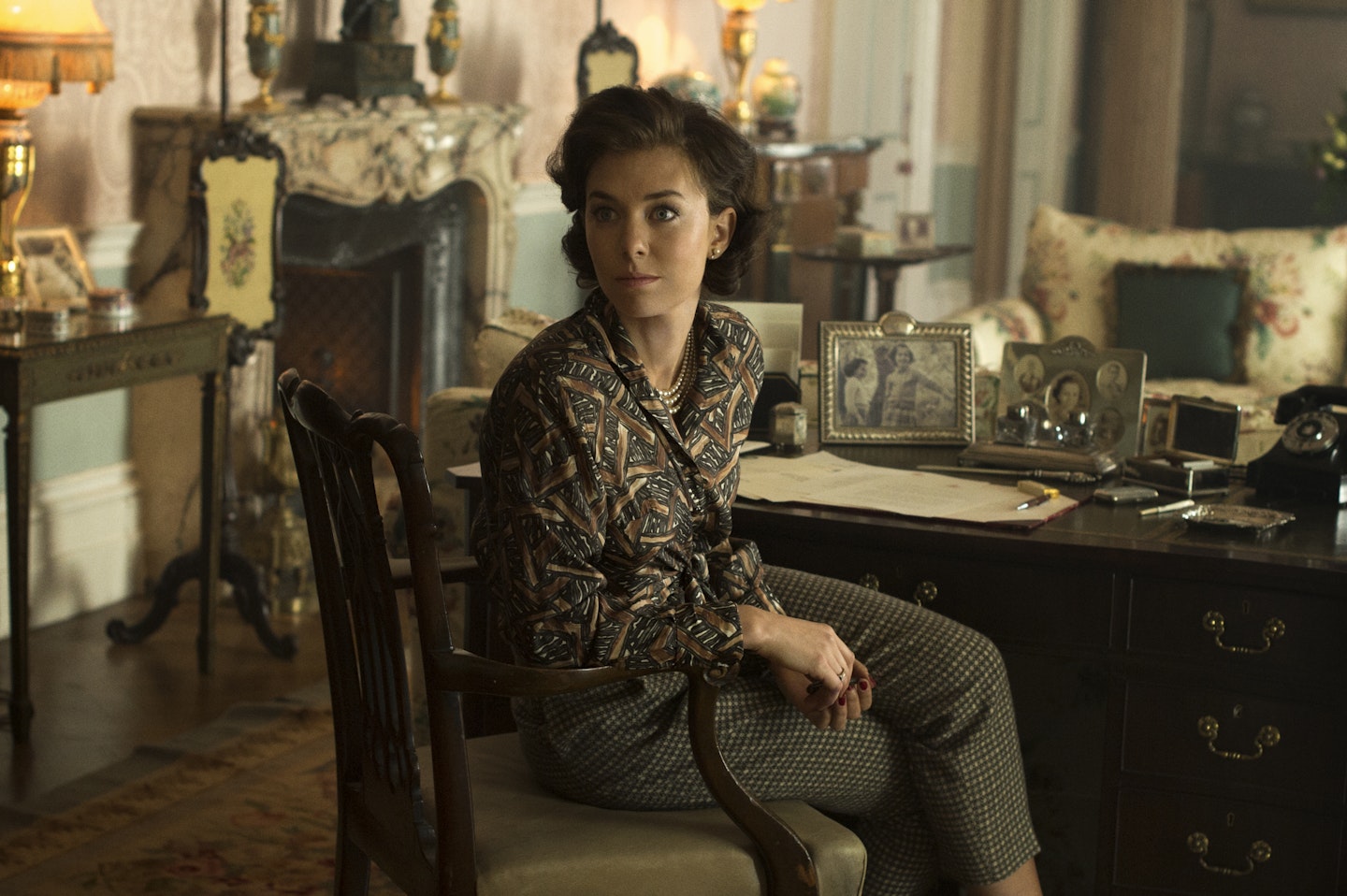
When her sister became Queen, Margaret was almost suddenly in this void, and she had to fill it with what she could, I guess. For her costumes, I wanted to look at the movement outside of the royal family – what was really going on. We also hand painted and beaded this lovely mink coloured dress for a scene when she gives a speech at the American embassy, and I just thought, “I’m going to put great big pockets in it.” I loved the idea of her having pockets in this evening dress so that she could swagger around, and Vanessa loved that too. One shirt I really wanted to do was in a Brutalist print, a nod to her later dabble in the arts. With Margaret, everything was just a little better cut – the coats were a bit longer, there was just a bit more thought about it. I enjoyed playing the two sisters against each other.
Did you have any other favourite characters to dress?
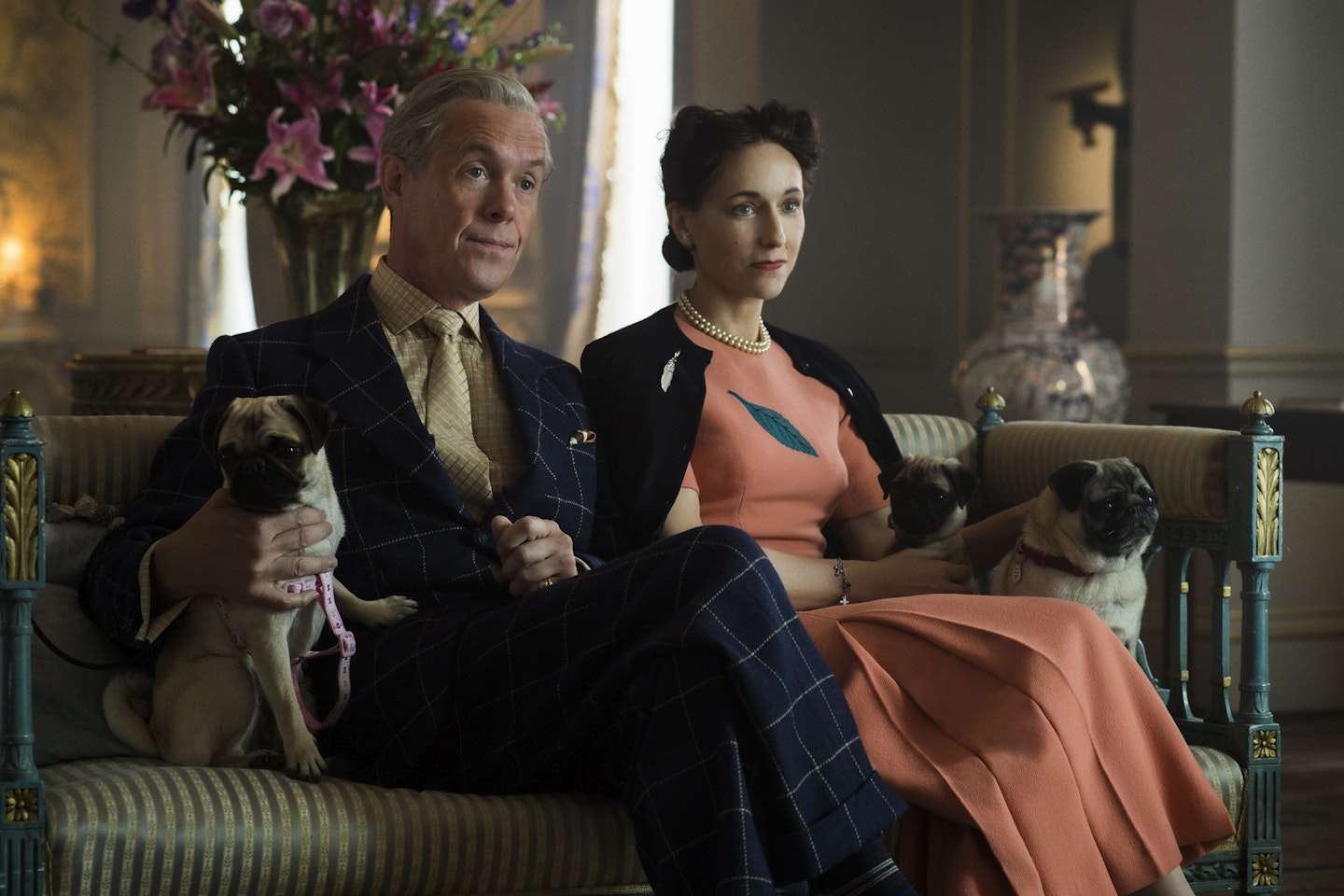
So many people have made Wallis Simpson costumes, but I loved making clothes for [actress] Lia Williams because I tried not to directly copy – that would be too easy – but to get an essence, to play in the style of Wallis. We tried to be witty about it, and not to be too literal when we didn’t have to be. She used to wear designers like Schiaparelli and Mainbocher, so I looked at the costumes that they made. We did a little blue suit for her that was very plain on the back, but with this big satin bow on the front. She was all about show, and I liked the idea that her outfits were theatre. Then there’s a later scene where she sits in a little orange dress, with a leaf print falling down. They start in spring and end in autumn: no one really knows that I did that, but that was my fun as a designer.
How did you work with the team and cast to create the show’s overall look?
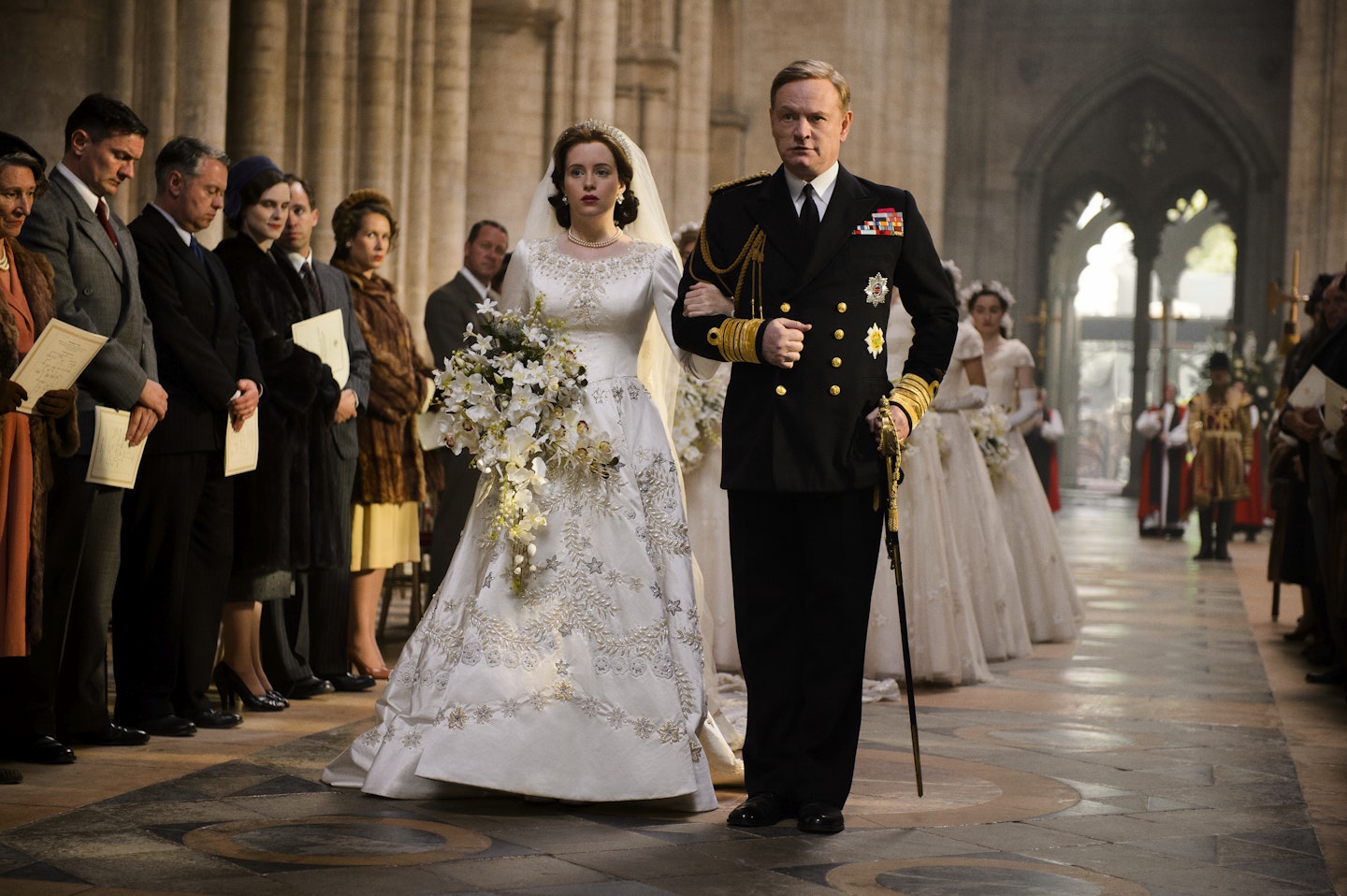
So much is in the planning and the thought process: when another character comes into the room, what colour will they be in? I’d say to Martin [Childs], “Could we have light pink flowers because Elizabeth will be in light pink?” It’s all about creating this little web of visuals – we had such a similar understanding of palette, and colour is such a good language in the beginning, so that worked really well. It’s so important to form a relationship with the actors, too: I’m usually the first person that they meet, so that’s very formative. I like to speak to them about what I imagine their character could be, listen to what they imagine it could be and find a way that we move forward in the same direction.
How many of the show’s costumes were vintage pieces?
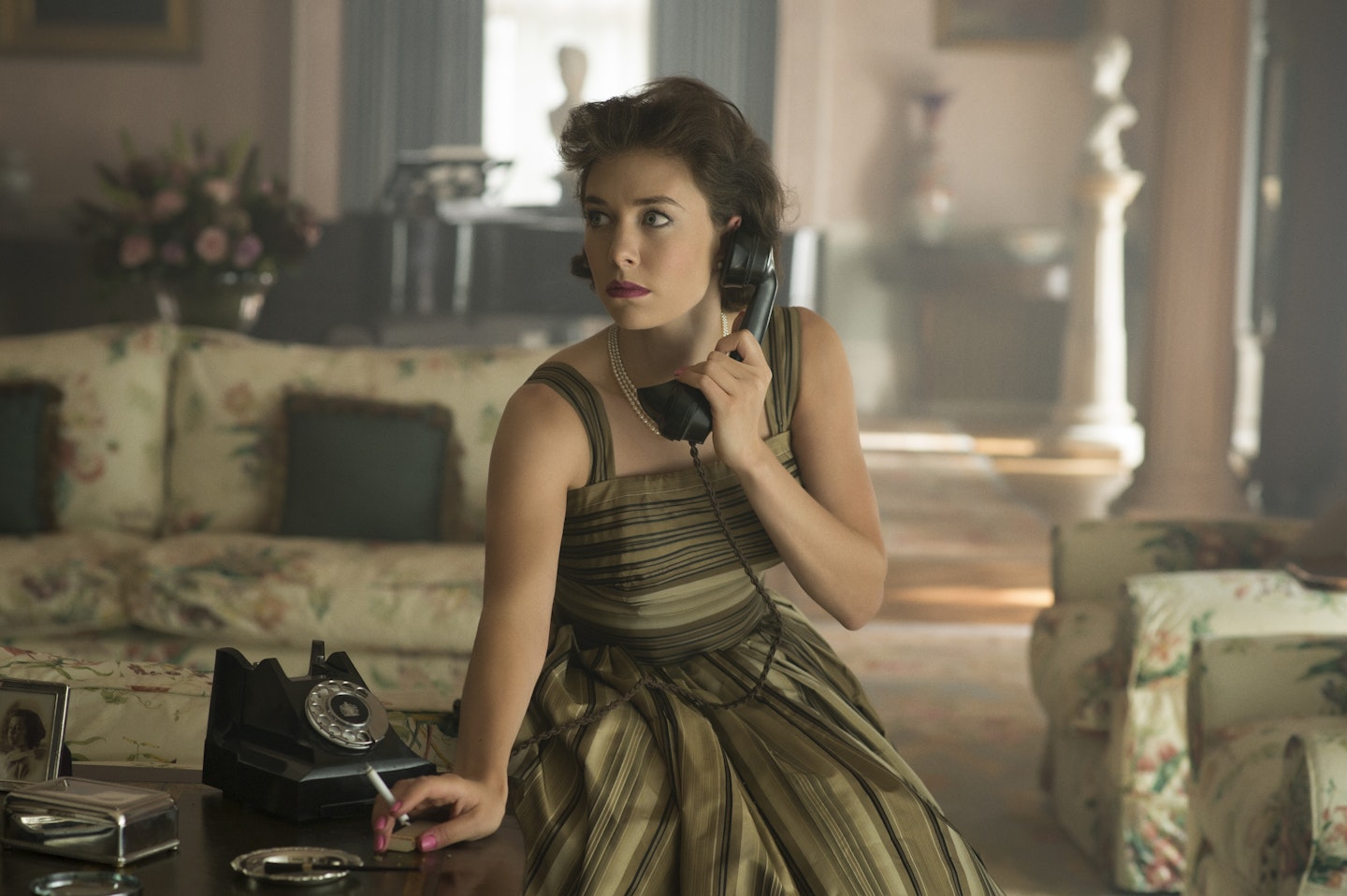
We couldn’t solely use vintage because it’s so rare to find vintage costumes of that level of beauty you’d need for royals, and then they’d have to fit the actors. We decided really early on to make 80, 90 percent of Elizabeth’s wardrobe; it just seemed the best way forward. We had a really busy workroom from day one, making inspiration boards and working out the pieces that we might have to copy. It was just so many costumes to make, I think that’s what hit us!
Is there a scene or a specific costume that you’re most proud of?
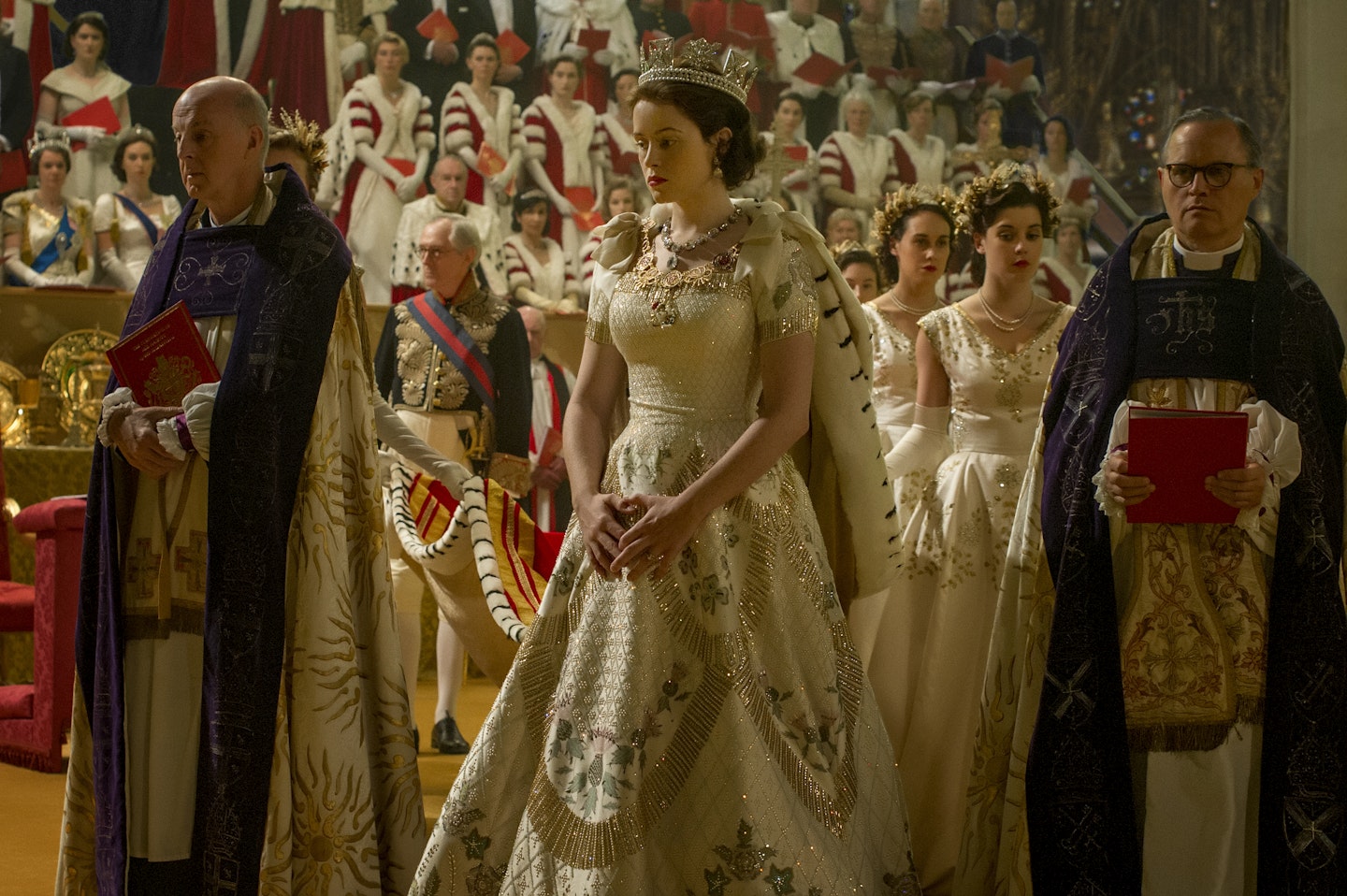
Although we rented the coronation dress, everything else in that room was made – that was the most enormous task. Obviously, it was originally broadcast in black and white, but we had to make it for full screen colour – and you have to get everything right because you don’t know what you’ll see in the final cut. If you don’t do it, you can bet that’s what people will see, so we did everything. It was such a lovely job to do: I love Game of Thrones, but sometimes people pigeonhole you and say “Oh, so you just do medieval?” It was great fun to do something different for a while...
The Crown: Season One is out now on Blu-ray™, DVD and Platinum Edition Blu-ray™ and DVD.
READ MORE: Claire Foy Already Knows Who's Going To Be The Crown's Next Queen
READ MORE: The Trailer For The Crown Season Two Is As Lavish As We'd Hoped
